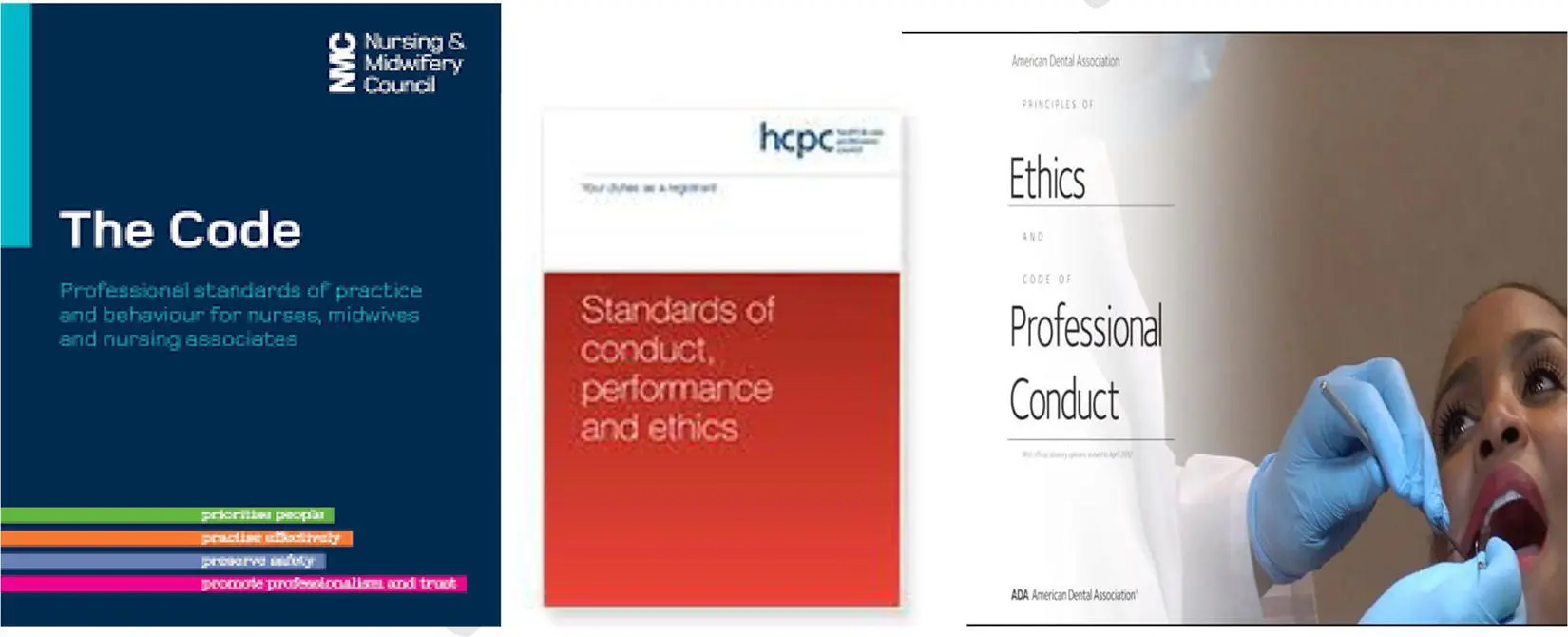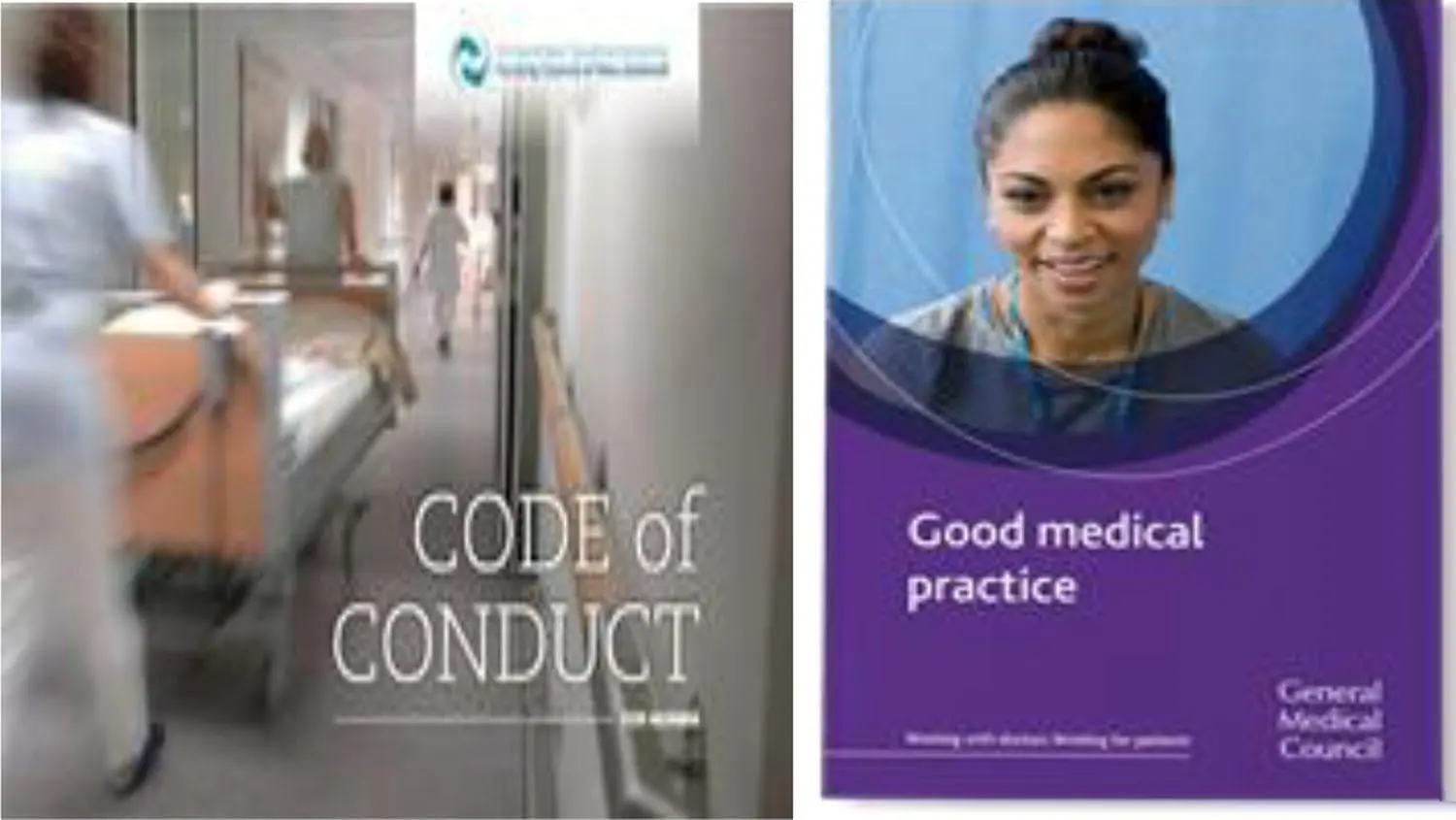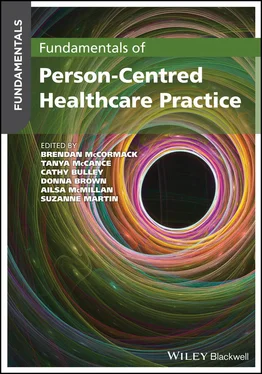What is professionalism?
In this first exercise, you are invited to think about a person that you consider to be highly professional.
What is it about that person that you admire?
What does this tell you about the meaning of professionalism?
In your thinking you may have considered the knowledge, skills, attributes and values of a professional. You may have also considered how they present themselves, their behaviour and the way their practice is regulated.
Why is it necessary to define ourselves as professionals? Griffiths and Tengnah (2017, p. 46) suggest that the purpose of professionalism is fourfold: to protect the public; to deter unprofessional or unlawful actions; as a regulatory framework; and to enable learning by other members of the profession. As with many concepts, it is sometimes easier to develop an understanding of what professional practice is by considering behaviour that is unprofessional. Perhaps this may relate to a person's behaviour, for example how they treat you or how they treat other people. It may be in their attitude to others, putting their own needs before those of people in their care, a disregard for professional boundaries or not following policies and procedures. Professional behaviour may also be reflected in how people present themselves, for example timekeeping, their tone of voice, whether they are honest. Furthermore, a healthcare worker's behaviour outside work may also cause concern professionally, such as inappropriate use of social media or disregard for the laws of the country.
Standards for professional practice
Many healthcare‐related roles are professionally regulated. This means that each profession is governed by an organisation known as a professional regulator. In understanding the meaning of professionalism, it is important to have an awareness of the role of professional regulators. Some examples are the American Dental Association, Health and Care Professions Council, General Medical Council, Malta Medical Council, Nursing and Midwifery Council, Nursing and Midwifery Board of Australia. The regulator for each professional group generally determines the standards for education and practice for that profession within a country or across a geographical region. On successful completion of a programme of education that is generally approved by a regulator, the names of individuals are added to a professional register. By having your name added to a professional register, you are agreeing to abide by the standards for that profession as set out by your regulator. Each professional regulator provides clear guidance about the required standards of practice, conduct and behaviour for members of the profession. This usually takes the form of a Code of Practice or Good Practice requirements.


It is important that you are familiar with the requirements for your profession in the jurisdiction where you will be licensed/registered. If you are interested in knowing more about professional standards please see:
www.nmc.org.uk/standards/standards‐for‐nurses
https://ed‐areyouprepared.com/wp‐content/uploads/2019/01/Nusing‐and‐Midwifery‐Board‐Code‐Advance‐copy‐Code‐of‐conduct‐for‐nurses‐Effective‐1‐March‐2018.pdf
www.hcpc‐uk.org/standards
www.gmc‐uk.org/about/what‐we‐do‐and‐why/setting‐the‐standards‐for‐doctors
https://policybase.cma.ca/en/viewer?file=%2fdocuments%2fPolicypdf%2fPD19‐03.pdf#phrase=false
Maintaining professional standards
The Code of Practice or requirements for good practice for each profession clarify the standards for education and practice that must be consistently met by all members of that profession. Maintaining standards of professional practice is important because they enable the public to have confidence in the healthcare professionals to whom they entrust their care and that of their families. The public can be satisfied that each registered healthcare professional has met the standards for entry to the register and ongoing requirements in order for their registration to remain live.
You are invited to consider the professional implications of the behaviour demonstrated by the radiography student in this clinical scenario.
Chan has brought Hu, her 2‐year‐old toddler, to the emergency department. Chan suspects that Hu has swallowed a small metal key. The key is clearly visible on an X‐ray image, which has been viewed by several members of the radiology team. A radiography student takes a picture of the X‐ray on his mobile phone and shares it with a friend through social media. The friend posts the photograph to a public social media site and it is viewed by 5000 people.
From your reading of the relevant professional code, what issues does this raise? Do you feel this behaviour is professionally acceptable? Give a rationale for your answer.
Thinking of the Person‐centred Practice Framework, consider which component(s) of the prerequisites domain you can draw upon to explore this scenario.
In your discussion, you may have considered professional issues such as dignity, confidentiality and the challenges of using social media. For example, Chan has not given consent for this image to be shared in this way. This may have breached data protection requirements relating to the sharing of information and its justification. In this scenario, there is no apparent permission or justification for sharing the image and the action therefore compromises the privacy and dignity of Chan and the family, which may have serious consequences for the student and the healthcare provider. You may have also considered the Person‐centred Practice Framework, specifically the prerequisites domain including clarity of professional beliefs and values such as the need to demonstrate respect for personhood and commitment to the job. The student is not role modelling person‐centred behaviour and by sharing this information has breached procedures and shown abuse of his position.
Legal and ethical responsibilities
Our professional codes and standards are underpinned by legal and ethical responsibilities and aligned with values and rights that are fundamental to person‐centred practice. These include considerations such as the primacy of the individual, the individual's right to self‐determination, social justice and equitable access to healthcare (Levinson et al. 2014). Health and social care regulators also have a role in managing risks to the public, to other healthcare professionals and to individual practitioners themselves, so that only those who are fit to practise are permitted to do so. Regulators depend on registrants, employers, the public and law enforcement bodies to report any concerns that may bring into question a registrant's fitness for professional practice. The following activity encourages you to think about issues of risk.
John is a second‐year student currently undertaking practice learning in a community residential setting for older people. Whilst the registered staff are attending a meeting, Mr Gregor presses the call bell requesting a commode. The safe transfer of Mr Gregor from his bed to commode will require two people to operate the use of a ceiling hoist and there is no‐one else around. John has never used this type of equipment and he's frightened of asking for help. Mr Gregor urgently needs to use the toilet. John manages to apply the sling on his own and hoists Mr Gregor onto the commode. Afterwards John asks one of the registered staff to help him return Mr Gregor to bed and comments that Mr Gregor nearly slipped during the earlier transfer.
Читать дальше














